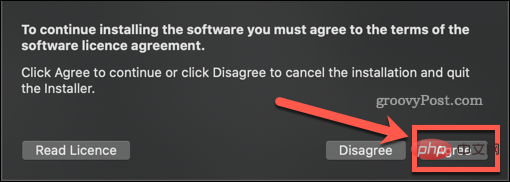How to install BlackHole
In order to record screen with internal audio on Mac, you need to install a free software called BlackHole. The software allows you to pass audio from one application to another, and you can also use it to set internal audio as a recordable source.
Install BlackHole on Mac:
- Navigate to the BlackHole download page.
- Enter your details and click Subscribe to Free Mac Downloads. If you're worried about receiving spam, you can sign up for a temporary disposable email account.

- You should receive an email from Existential Audio Inc. Click the link in the email to access the BlackHole download page.
- There are three download options. Click on the BlackHole 2ch option — this is enough to record your internal audio.

-
After downloading the installer, open your Downloads folder in the Finder application and double-click BlackHole pkg file.

- If you are asked for permission to install the application, enter your system password and click Install Software.

- Setup will start - click Continue.

- If you wish to proceed, please read the license and click to agree.

- Step through the installer until the installation is complete, then click Close.

- Unless you have a reason to keep it, click "Move to Trash" or "Move to Trash" to Delete the installation files.

#BlackHole is now installed on your Mac.
How to Set Up BlackHole to Record Internal Audio on Mac
The next step is to set up BlackHole so that it converts your internal audio to recordable output.
To set up BlackHole to record internal audio on your Mac:
- Open the Audio Midi Settings app on your Mac. The fastest way is to use the shortcut Cmd Space to open Spotlight and then enter Audio Midi Setup.
- Double-click the Audio Midi Settings application.

- Click the icon at the bottom of the screen.

- Click to create multiple output devices.

- Make sure Built-in Output and BlackHole 2ch are selected. It's also worth clicking on Drift Correction for optimal performance.

- It is important that built-in output is preferred; if this is not the case, uncheck BlackHole 2ch and recheck it, and Built-in output should appear at the top.
- Right-click on the new Multi-Output Device and select Use This Device For Sound Output.

The black hole has now been set up.
How to record screen with internal audio on Mac using BlackHole
Now that all the settings are complete, it’s time to record the screen. The quickest and easiest way is to use your Mac's native screen recording tool.
Record screen with internal audio on Mac:
-
Launch the screen recording tool using the keyboard shortcut Cmd Shift 5.
- Select your screen recording options. The left option records the entire screen, and the right option allows you to select the area to record.

- Click Options and then under the Microphone section, click BlackHole 2Ch.

- Click Record to start recording.

- After you finish recording, press Cmd Shift 5 again and click the Stop Recording icon. Alternatively, you can use the keyboard shortcut Cmd Ctrl Esc.

- A thumbnail of your recording will appear in the lower left corner of the screen. Click on it and press the "Play" button to play the recording and make sure your internal audio has been captured.
- One problem with using BlackHole is that you can't change the system volume using the volume keys. To do this, you need to change the volume slider in the Audio Midi settings.

- To return your audio settings to normal, right-click the Built-in Output in the Audio Midi Setup application and select Use This Device For Sound Output.

- You should now be able to control system volume using the volume keys again.
Control Your Mac Audio
It’s frustrating for a company that prides itself on user experience to figure out how to record on a Mac with internal audio The screen is not as simple as imagined.
The above is the detailed content of How to record screen using internal audio on Mac. For more information, please follow other related articles on the PHP Chinese website!


















